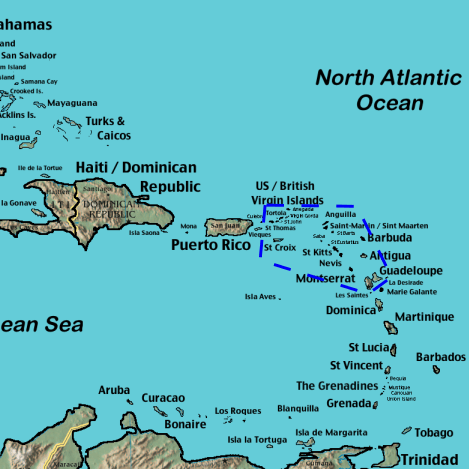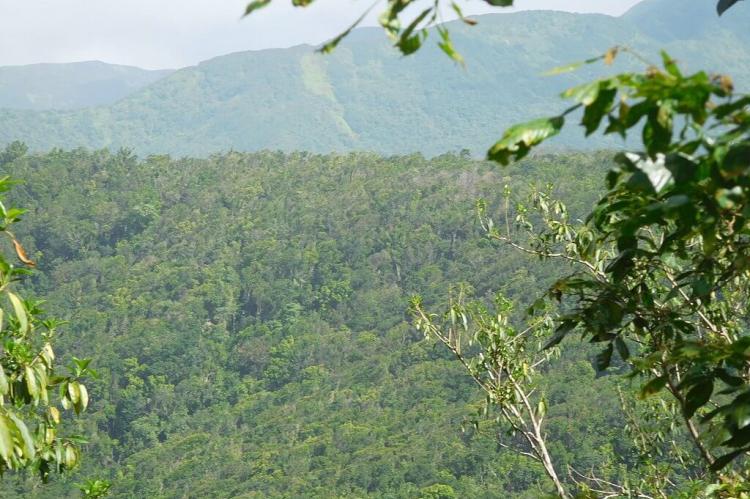The Leeward Islands Moist Forests: A Vibrant Tapestry of Island Ecosystems
The Leeward Islands moist forests ecoregion spans the northern islands of the Lesser Antilles chain in the eastern Caribbean Sea. Characterized by rugged, volcanic mountains cloaked in lush tropical forests, this ecoregion is a testament to the resilience and richness of island ecosystems.
The Leeward Islands Moist Forests: A Vibrant Tapestry of Island Ecosystems
The Leeward Islands moist forests ecoregion is captivating and diverse. It spans the northern islands of the Lesser Antilles chain in the eastern Caribbean Sea. The ecoregion within this vibrant island arc is characterized by rugged, volcanic mountains cloaked in lush tropical forests—a testament to the resilience and richness of island ecosystems.
Carved by millennia of volcanic activity and sculpted by the ebb and flow of trade winds, this ecoregion encompasses a mosaic of distinct island environments, each with its unique geological features and microclimates. From the towering peaks of Guadeloupe to the verdant hillsides of Montserrat, the Leeward Islands moist forests ecoregion showcases the remarkable diversity that can thrive within the confines of these isolated yet interconnected Caribbean islands.
Geographic Scope and Topography
The Leeward Islands moist forests ecoregion covers approximately 85% of the island of Basse Terre in Guadeloupe, the central, mountainous portions of Montserrat, Saint Kitts and Nevis, small southern portions of Antigua, and western portions of the U.S. and British Virgin Islands. This diverse array of islands with unique geological and topographical features contributes to the ecoregion's remarkable diversity.
Climatic Influences and Hurricanes
Situated within the trade winds belt, the Leeward Islands experience a subtropical climate, with the islands' relief playing a crucial role in determining rainfall patterns. Islands with sufficient elevation receive adequate precipitation, while those with more subdued topography tend to be drier and semi-arid. A notable feature of this ecoregion is its position in the main hurricane track, which significantly influences the vegetation and forest structure.
The frequent passage of hurricanes through the region has led to an uneven forest canopy and the canopy's opening, allowing for the growth of pre-climax tree species. This dynamic disturbance regime has shaped the ecoregion's unique ecological characteristics, fostering a resilient and adaptable ecosystem.
Protected Areas and Conservation Efforts
Recognizing the ecological importance of the Leeward Islands moist forests, a considerable portion of this ecoregion is situated within protected areas. These include the Virgin Islands National Park on the island of St. John in the U.S. Virgin Islands, Guadeloupe National Park in Guadeloupe, and the Centre Hills forest reserve on the island of Montserrat.
These protected areas are crucial in safeguarding the ecoregion's biodiversity and providing vital habitats for many endemic species. Conservation efforts within the Leeward Islands moist forests ecoregion aim to balance local communities' needs with preserving this ecological treasure.
Flora and Fauna: A Tapestry of Endemism
Like many island chains, the Leeward Islands moist forests ecoregion is home to many endemic species, with diversity and endemism being exceptionally high on the larger and more remote islands. The ecoregion's diverse vegetation includes the ubiquitous Miconia and Clusia spp., ranging from shrubs to medium-sized trees, and the impressive gommier or candlewood tree (Dacroydes excelsa) in less disturbed areas.
At higher elevations, the prevalent vegetation shifts to include the iconic mountain cabbage palm, Euterpe globosa. The mammalian fauna of the ecoregion is dominated by bats, with ten recorded species, including the endangered Guadeloupe big brown bat (Eptesicus guadeloupensis) and the vulnerable Thomas's yellow-shouldered bat (Sturnira thomasi). The endangered subspecies of the Guadalupe raccoon, which resides in mangrove areas and habitats above 300 meters, is another notable endemic species.
The Leeward Islands moist forests ecoregion also plays a vital role in supporting a diverse array of endemic bird, reptile, and amphibian species, highlighting the region's importance for regional and island-level biodiversity conservation.
Conclusion: A Resilient and Irreplaceable Ecosystem
The Leeward Islands moist forests ecoregion is a remarkable and dynamic ecosystem, shaped by its unique geography, climate, and the resilience of its flora and fauna. As a tapestry of endemic species and diverse habitats, this ecoregion represents an irreplaceable ecological treasure that warrants continued conservation efforts and scientific study. By protecting and understanding this vibrant island ecosystem, we can ensure the preservation of its invaluable biodiversity for generations to come.

Map depicting the location of the Leeward Islands moist forests (islands inside the dashed blue box).
